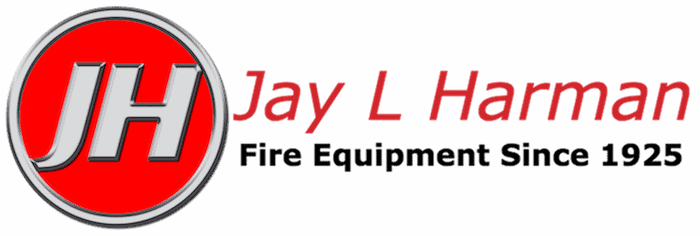DOT pressure vessels (cylinders) require periodic inspections to evaluate the integrity and safety of each vessel. After years in use, it is important that authorized holders of a Re-qualification Identification Number (RIN) conduct a thorough examination of each vessel. Two non-destructive test methods are generally used for re-qualification: hydrostatic (volumetric expansion) and ultrasonic examination. Ultrasonic Examination (UE) is the most popular and reliable test method for portable cylinders and offers several advantages to equipment operators.
This 2 part article provides information that will help the reader better understand the basics of Ultrasonic Examination of Pressure Cylinders. Key elements of this information include:
- The benefits of ultrasonic examination
- The ultrasonic examination methodology
- Ultrasonic examination use of sound waves during testing
- Ultrasonic Examination Test Procedure Key Steps
Part 1 addressed the Benefits of ultrasonic examination and the Ultrasonic examination methodology. Part 2 addresses Ultrasonic examination use of sound waves during testing and the Ultrasonic Examination Test Procedure Key Steps.
Ultrasonic examination use of sound waves during testing
Longitudinal Sound Waves (L-Wave) are directed straight down into the material at a 90° angle to the outer surface of the cylinder. These waves measure wall thickness and locate defects oriented perpendicular to the sound wave.
Shear Sound Waves (S-Wave, Angle Beam) enter the material at a 45° angle to the outer surface of the cylinder. If no flaw exists the sound wave will not reflect back to the sensor. These waves locate defects in the material in any orientation. Due to the refraction of the sound wave, the transducer does not need to be directly over the defect. This allows the technician to inspect sections of the material that are difficult to access.
Ultrasonic Examination Test Procedure Key Steps
- Visually Inspect the Cylinder Per Applicable CGA Pamphlet ( C-6 for steel cylinders or C-6.1 for aluminum cylinders) – Prior to re-qualifying the cylinder it must pass a thorough visual inspection.
- Select the Calibration Cylinder – The proper calibration cylinder is selected based on the cylinder diameter and must be manufactured from an acoustically similar material as the test cylinder.
- Select the Calibration File – The proper calibration file is selected based on the calibration cylinder.
- Calibrate In = Load the calibration cylinder onto the test table and run the calibration test.
- Review the Calibration Results – The operator must review the on-screen results window and the system print out. All of the machined notches must be found for the calibration results to be accepted. If all of the notches are not found, adjustments will need to be made to transducer sensitivity and C-scan gate placement. Once the test system is calibrated properly, the results are saved and the operator can proceed with the test
- Cylinder Testing – The first cylinder is loaded onto the test table and the appropriate test file is selected. One or more cylinders can be tested as long as they share the same diameter and material composition. Note: Recalibration is required after 200 cyls, 4 hours of testing, the end of the shift, the completion of tests for a designated cylinder size, an equipment change or if the operators change.
- Calibrate Out – After testing is completed, the operator must close the test file, re-open the calibration file and re-run the calibration cylinder. If the system is unable to calibrate out successfully the results of the cylinders tested between the calibration in and the failed calibration out are invalid and the entire batch will need to be retested.
- Cylinder Stamping and Daily Test Reports – The cylinders pass their periodic re-qualification once the system calibrates out properly. Next the cylinders are stamped with the Month/RIN#/Year/”UE” to mark the test date, the re-qualification company and the method of the test inspection.
- At the conclusion of the test, the operator must upload the test results onto a Daily Test Log and submit it to a Level III UE tester for data review, cylinder tracking and filing.
The Jay L Harman Fire Equipment team understands your fire fighting and cylinder re-qualification needs and is ready to help
Jay L Harman’s DOT Hydrostatic Testing and Ultrasonic Evaluation facility and equipment meet all NFPA requirements for the hydrostatic testing and Ultrasonic Evaluation of self contained breathing apparatus compressed gas cylinders in addition to testing ABC portable fire extinguisher cylinders.
Jay L Harman Fire Equipment Company is your local AMEREX dealer offering the full range of AMEREX Fire Extinguishers, Kitchen Protection systems, Vehicle Systems, Automatic Gas Detection and Industrial Systems.
Jay L Harman is the best and one of the biggest firefighting equipment suppliers and service providers in the region, specializing in fire suppression systems, fire extinguishers, emergency lighting, fire hoses, hydrostatic testing and more. Serving El Paso TX, Las Cruces NM and the surrounding areas, we pride ourselves on buying local and hiring local whenever possible.
Jay L Harman Fire Equipment is your go-to distributor for OVAL low-profile fire extinguishers in West Texas and New Mexico.
Contact Jay L. Harman Fire Equipment in El Paso TX at 915-533-7021 or Las Cruces NM at 575-523-8880.
Since 1925, we have protected businesses throughout the area from the harms and hazards of fires. Every Jay L Harman technician is licensed and regulated by the Texas Department of Insurance State Fire Marshal’s Office. Each of these technicians continually receives the most up-to-date factory training and certifications by our manufacturers. Contact Jay L Harman Fire Equipment today. Let our friendly and knowledgeable staff tell you more about our fire suppression systems and help you find the ideal fire suppression system for your needs. Learn more about our full offering of fire extinguisher training, firefighting services, firefighting products, request a quote, ask a question or request additional information.
